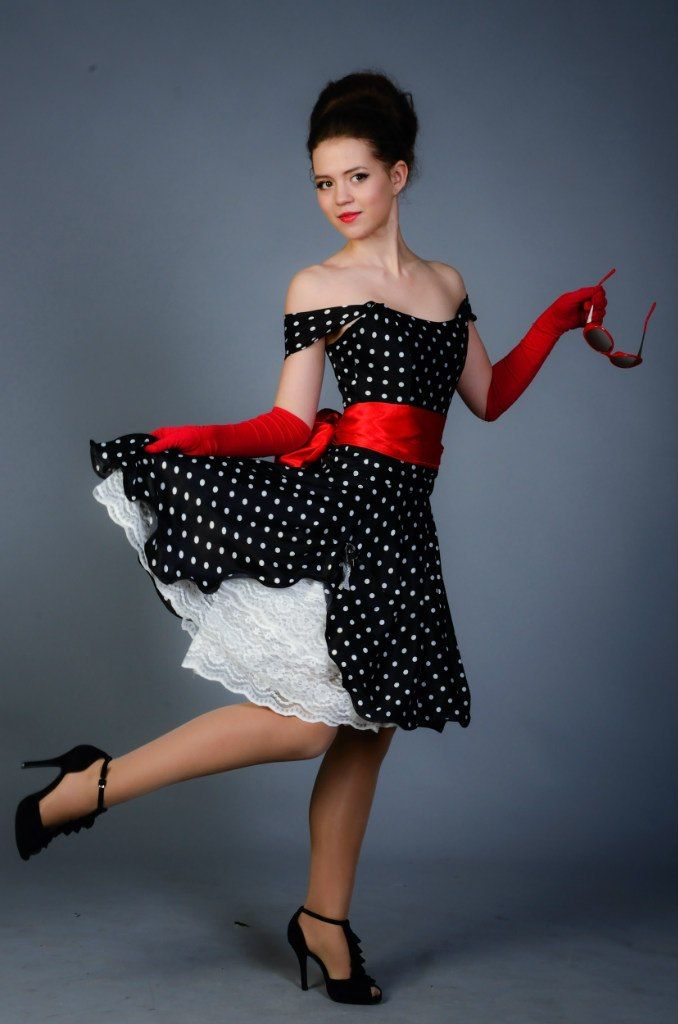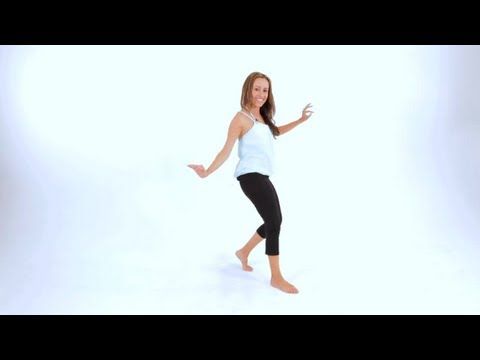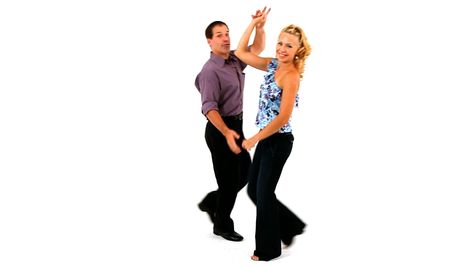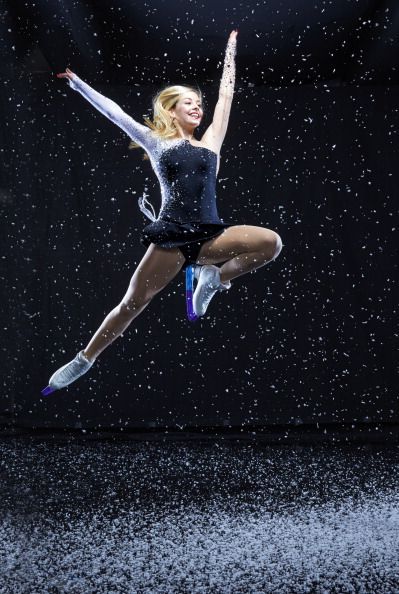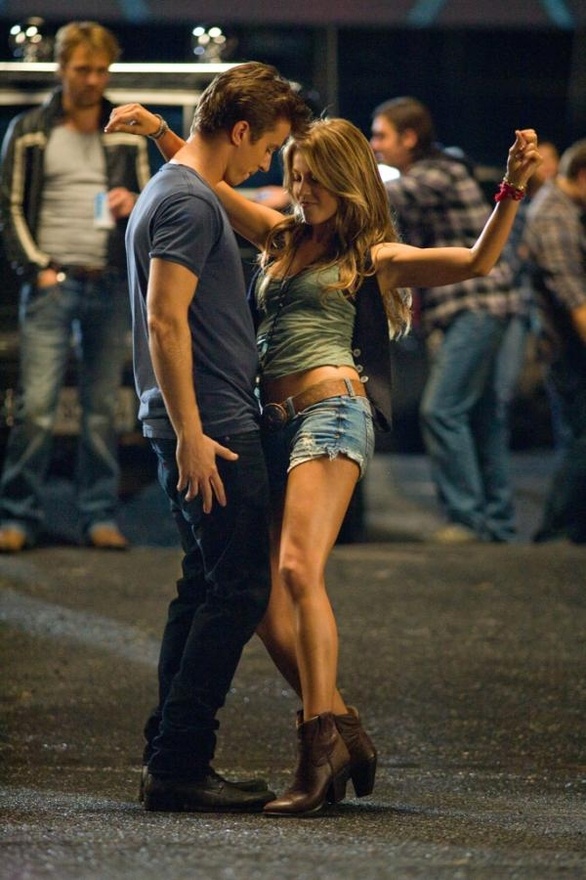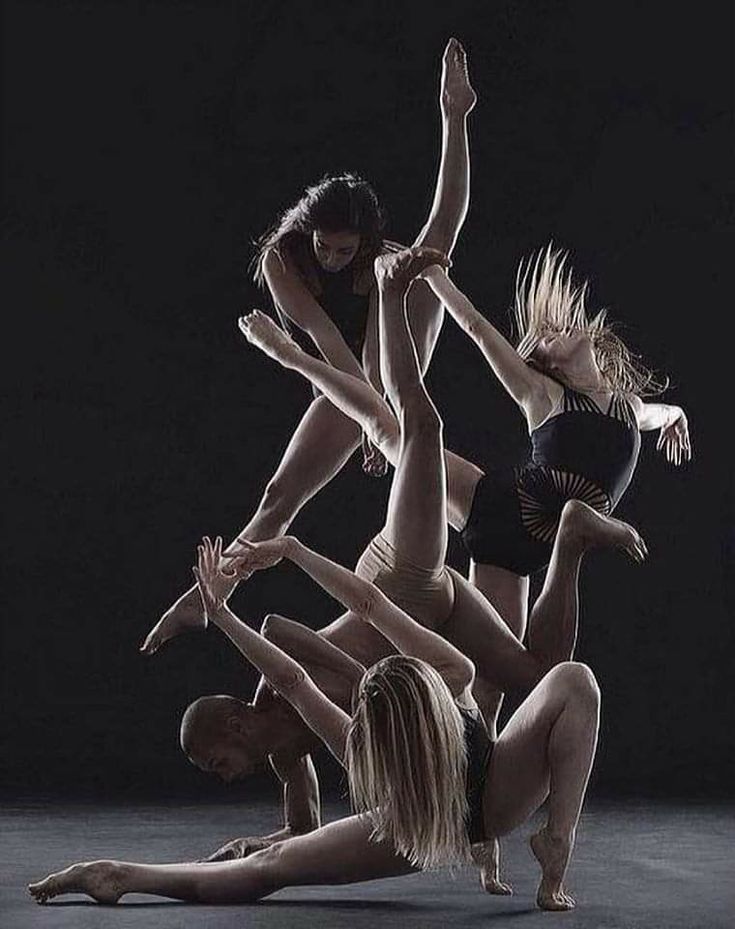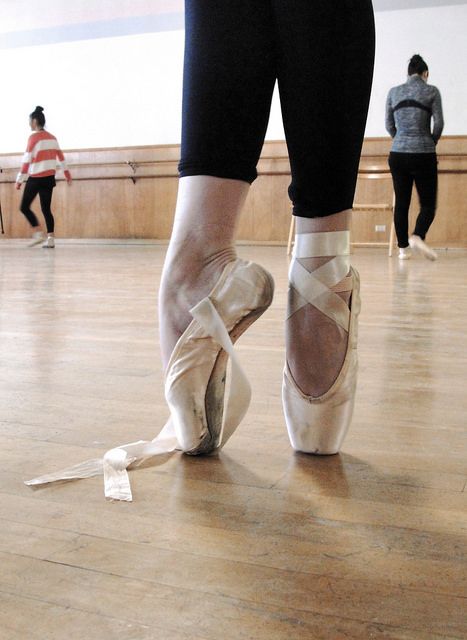How do chinese people dance
Chinese Traditional Dance, Chinese National Dance
The Chinese national dance culture has a long history. The track record of text cultural relics and images of the traditional Chinese dance is never extinguished during the past 5,000 years' history. This phenomenon is also rare in the culture history of the world.
What is traditional Chinese dance – the main characteristics?
The group characteristics of Chinese traditional dance mainly express in three aspects: the creation, the performance, and the spread, and is a perfect combination of song, music and dance. Chinese traditional dance come from the folk. Added gradually with the rapid movement, the harmony step and the unified rhythm, the Chinese traditional dance expresses the folks` need of emotion release in the way of pleasure, anger, sorrow and joy.
Chinese traditional dance history
About five or six thousand years ago, in the Neolithic age, the Chinese showed the groupment and self-entertainment of the original dance. In order to maintain and continue their life, human must create material wealth and spirit wealth through labor. So, working is the most basic and important social activities of human beings. Deeply rooted in the daily life of human, the dance must reflect the content of labor and reproduction.
Prehistoric Chinese dance originated from religion. Shamanist performs various religious ritual involving dances. Ancient dance was merely a religious ritual rather than a form of entertainment art. A five-string musical instrument named Se (瑟) and bone flute was created and played earliest Chinese traditional dance music.
During Zhou dynasty, there was great development of Chinese dance in the form of rites and large-scale royal religious ceremony. The dance was known as “Yue Wu” accompanied by music performance known as “Ya Yue”. There are two particular schools of dance, known as “Big Dance” and “Small Dance”. During Han dynasty, there were greater developments of dance as forms of entertainment. Professional training and the innovation of new gadgets used for dance were created. The Tang dynasty saw another peak development in Chinese dance. Tang dynasty dance was built on the foundation of the Han dynasty’s “Hundred performance” and a blend between foreign and Chinese culture during Age of fragmentation. With Xian’sTang Dynasty Music and Dance performance, people can glimpse into the beautiful dance at that time.
Professional training and the innovation of new gadgets used for dance were created. The Tang dynasty saw another peak development in Chinese dance. Tang dynasty dance was built on the foundation of the Han dynasty’s “Hundred performance” and a blend between foreign and Chinese culture during Age of fragmentation. With Xian’sTang Dynasty Music and Dance performance, people can glimpse into the beautiful dance at that time.
After Song dynasty, traditional Chinese folks dance began to rise up as the more popular dance. Various ancient dances began to disappear. The development of opera-dance as a form of entertainment during Yuan dynasty began to take toot. By Ming and Qing dynasty, opera dance became a mature form of entertainment art. By ROC and PRC period, musicals dance became a popular form of entertainment performance.
Some famous forms and styles of Chinese traditional dance:
Dragon Dance
The Chinese people often call themselves the "descendants of the dragon". The dragon is an intentional animal created by Chinese ancestors. It is a symbol of divine power and good fortune. Its shape is a combination of the totem shapes of many peoples. It shows that in ancient times, different clans on the land of China created the image of the dragon in the process of continuous union, merger and integration.
The dragon is an intentional animal created by Chinese ancestors. It is a symbol of divine power and good fortune. Its shape is a combination of the totem shapes of many peoples. It shows that in ancient times, different clans on the land of China created the image of the dragon in the process of continuous union, merger and integration.
From the Han and Tang Dynasty to the Ming and Qing Dynasties, there are numerous records of dragons on the historical books. Up to now, there are still folk customs of dragon dance to pray for rain. During every traditional Chinese festival such as Chinese New Year, Lantern Festival, there are dragon dances in different styles all over China - the giant gorgeous painted dragon, the "Baiye dragon" composed with hundreds of blossoming lotus, the "fire dragon" full of incense and with mouth breathing fire, "the human body dragon", "bench dragon", "hand dragon" and so on. Dragon dance has become the symbol of Chinese national spirit.
Lion Dance
The lion dance is one of the most reprehensive traditional Chinese dances and one of the most distinctive Chinese cultural arts.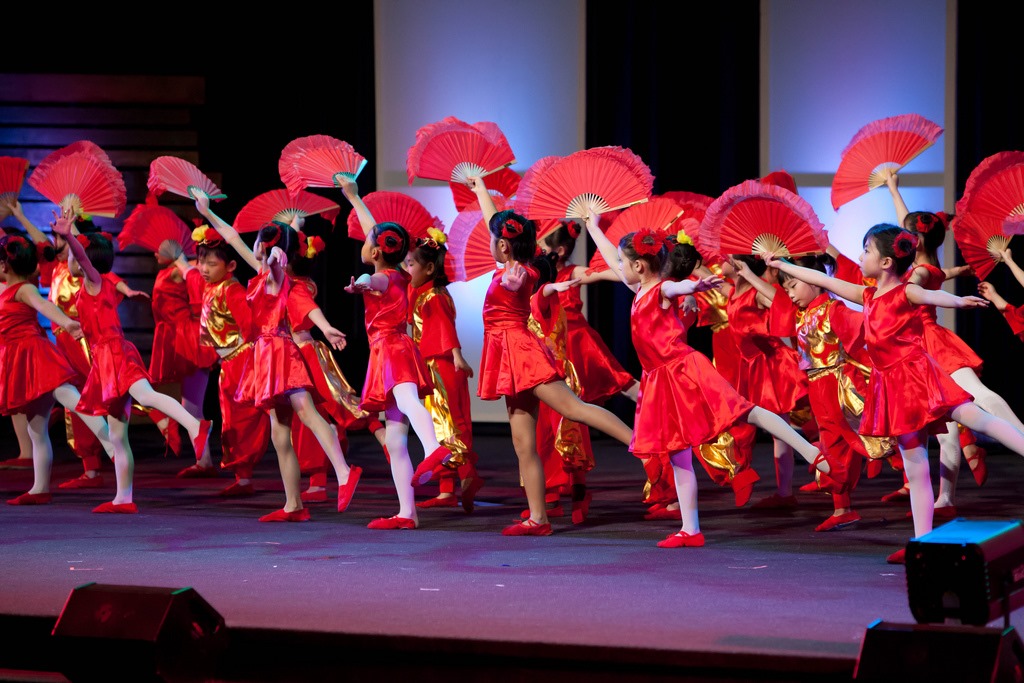 It is often mistakenly referred to as dragon dance. An easy way to tell the difference is that a lion is operated by two people, while a dragon needs many people. Also, in a lion dance, the performers` faces are covered, since they are inside the lion. In a dragon dance, the performers can be seen since the dragon is held upon poles.
It is often mistakenly referred to as dragon dance. An easy way to tell the difference is that a lion is operated by two people, while a dragon needs many people. Also, in a lion dance, the performers` faces are covered, since they are inside the lion. In a dragon dance, the performers can be seen since the dragon is held upon poles.
Basic lion dance fundamental movements can be found in most Chinese martial arts. It brings good fortune. The lion dance is usually performed by group of two or three people. One is at the head and one is at the tail of the lion. The third person usually wears a mask and acts as the “Happy Buddha”.
Lion dances can be categorized into two styles, Chinese Northern and Chinese Southern.
In northern dance, the lion is usually red, orange and yellow, shaggy in appearance with big golden head; The Chinese Northern dance was used as entertainment for the imperial court and elsewhere with dangerous stunts.
The Chinese Southern dance is more symbolic which usually performed as a ceremony to scare away evil spirits and to summon luck and fortune. The southern lion exhibits a wide variety of color and has a distinctive head with large eyes, a mirror on the forehead, and a single horn at center of the head. Lion dance costumes are considered to be spiritually protective when used as they are traditionally blessed before usage.
The southern lion exhibits a wide variety of color and has a distinctive head with large eyes, a mirror on the forehead, and a single horn at center of the head. Lion dance costumes are considered to be spiritually protective when used as they are traditionally blessed before usage.
Traditional Chinese Ribbon Dance
The traditional Chinese ribbon dance is a classical Chinese dance dated back to the Tang dynasty in the early eighth century. It has been attributed to Emperor Tang-Ming-Hwon and his consort Yang-Gwei-Fei for their musical and dancing talent respectively. The Chinese legend has it that Emperor Tang-Ming-Hwon (Tang Xuanzong) once dreamed that he was in the moon palace with many fairies singing and dancing in multicolored cloud-like long robes. The dance with the flowing silk ribbons and accompanied by Chinese music instruments- Erhu and Pipa is characterized by its refreshing and poetic mood. "The Dance of Nei Chang Yu Yi" (Rainbow and Feather Dress Dance) therefore was created, and can be performed in the form of solo, pas de deux and group dance. The dancers hold Fanjie (幡节), wore feathered dance dress and emeralds. When they danced, they were like a group of cranes flying in the sky. It is a reserved program of the Tang Dynasty, and also a masterpiece works of the traditional Chinese dance.
The dancers hold Fanjie (幡节), wore feathered dance dress and emeralds. When they danced, they were like a group of cranes flying in the sky. It is a reserved program of the Tang Dynasty, and also a masterpiece works of the traditional Chinese dance.
Yangko Dance
The Yangko dance is a traditional Chinese folk dance. The dance is smooth and compact in rhythm, featuring its jolly scene, abundant dance language, exuberant gestures, and vivid performing style. The Yangko dance was created by the farmers when they worked in the rice field in the Song Dynasty, and is used to worship god of farming to pray for harvest in ancient times. Year after year, the Yangko dance constantly absorbed techniques and forms from farming songs, folk songs, folk Kungfu, acrobatics and dramas. Because of the differences of regions and customs, some variations exist in the Yangko dances. There are three types of performance in Chinese Yangko dance: the song-and-dance duets, Yangko performed on the ground and Yangko preformed on the stilts. Yangko dance costumes, a kind of traditional Chinese dance performance costumes, are colorful and gorgeous, made mainly based on the theatrical costumes.
Yangko dance costumes, a kind of traditional Chinese dance performance costumes, are colorful and gorgeous, made mainly based on the theatrical costumes.
Traditional Chinese Fan Dance
Fan dance generally refers to the dance with the fan as the main prop. It is one of the traditional styles of Chinese folk dance. The Han, Hani, Korean and other ethnic groups have formed their own fan dance styles. Hani fan dance is divided into brown fan dance and paper fan dance, and popular in Honghe, Yuanjiang, Xinping, Yuanyang counties of Yunnan Province.
The brown fan dancers are mostly women. They use Japanese banana leaf or palm leaf fans to simulate the life, posture and moves of the silver pheasant. The dance is gentle and solemn, showing worship for the grandmother of the village god, expressing the good wishes and ideals of the Hani people. The paper fan dance is an evolution of the brown fan dance. It is mainly performed by men during funerals. The dance can be performed by two, four or many people in pairs.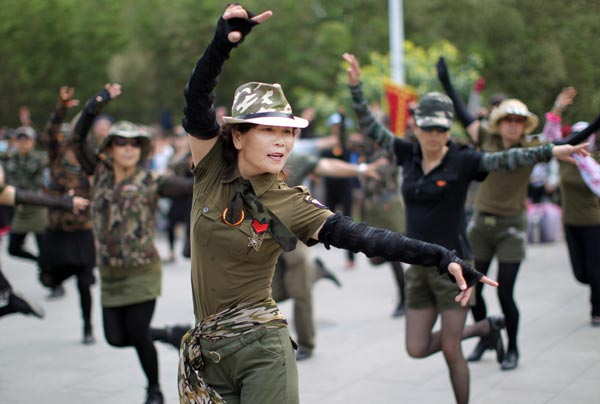 The dance music rhythm is slow and most of the dance mimics the movements of birds.
The dance music rhythm is slow and most of the dance mimics the movements of birds.
Korean fan dance originated from the Korean tradition of witchcraft and later developed into a form of performance dance. Korean fan dance is usually performed by women, who express their inner joy by waving their fans. It shows the unique rhythm of the Korean nationality, the inner emotions, and the curvilinear rhythm.
Traditional Chinese peacock dance
Peacock dance, the most famous traditional dance performance of Dai people, is popular in Ruili, Luxi and Xishuangbanna in Dehong Dai and Jingpo Autonomous Prefecture, Yunnan Province. Legend has it that over a thousand years ago, Dai leader Zhaoma LiJiesu learned to dance by imitating the graceful posture of peacocks. Later, the dance moves were processed by generations of folk artists, and passed down to form the peacock dance today.
The movements of peacock dance are graceful, flexible, light and agile. It has the following characteristics: 1) It is manifested by a flexible rise and fall in the knee; 2) The characteristics of peacock dance are also shown through the soft and firm changing of arms, wrists and fingers; 3) Peacock dance moves require speed and agility on calf, and eye flexibility.
Yang Liping is the most famous peacock dancer. Her master works "Spirit of the Peacock" and "Love of the Peacock" are modern dances that absorb the characteristics of the traditional peacock dance, but are quite different from the traditional peacock dance in terms of costume and performance.
Chinese traditional long sleeves dance
Long sleeves dance is one of the four great effects of Chinese Peking Opera, it blends the characteristics of both opera and dance, showing a unique beauty. Originated in ancient Chinese dance, long sleeves dance was very popular as early as the Han and Tang dynasties. This dance form pays attention to body rhyme, swaying posture, unique verve, and special technique charm.
Related Reading
Chinese Folk Dance History and Varieties, Traditional Chinese Dancing
When one speaks of folk dances in connection with Chinese culture, most people today think of the quaint folk dances of ethnic minorities, forgetting that the forefathers of the "tribe" that would later be referred to as the Han Chinese were perhaps the first Chinese people to make use of ritual dancing.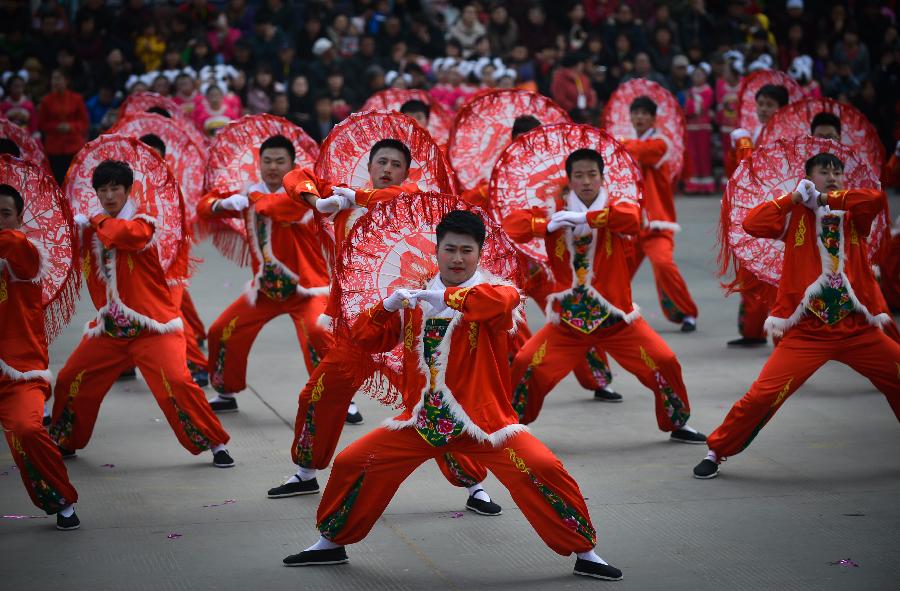 The early Chinese folk dances, like other forms of primitive art, were essentially ritual enactments of superstitious beliefs performed in the hope of a good harvest, or – in the case of the earliest Chinese folk dances – in the hope of a good hunt, since the earliest Chinese folk dances were performed by hunter-gatherer folk.
The early Chinese folk dances, like other forms of primitive art, were essentially ritual enactments of superstitious beliefs performed in the hope of a good harvest, or – in the case of the earliest Chinese folk dances – in the hope of a good hunt, since the earliest Chinese folk dances were performed by hunter-gatherer folk.
Though no corresponding written historical source exists, archeologists have found pottery shards in China dating from the 4th millenium BC (about 6000 years ago) which depict dancers brandishing spears and other weapons that were used for hunting. There is thus a direct parallel between the earliest Chinese hunting-dance rituals and the Cro-Magnon paintings on the walls of the caves of Lascaux in south-central France (the Department of Dordogne) that depict the animals hunted by those cave dwellers, and before which, to the flickering flames of a nightly bonfire, hunting dances may well have been performed; both were done in the belief that by performing these rituals, the hunter thus gained power over the hunted.
Much, much later, during the Han (BC206 – CD 220) Dynasty period, when most of the folk dances of the many ethnic minorities of present-day China were developed, the ethnic groups in question had long since become primarily farmers, if not farmer-gatherers, i.e., farmers who supplemented their annual harvest with the gathering of freely growing fruits and nuts as well as with fishes caught from rivers, lakes – and the ocean, where applicable – and of course some hunting, especially with the aid of traps, was practiced. Therefore the folk dances that were developed during this period reflected a superstitious belief that in making ritual sacrifices to the gods in appreciation of the "harvest" (i.e., to include freely growing nuts & berries, fishes, etc.), one could persuade the gods to provide another bountiful harvest in the following year.
Folk dance of Miao ethic group
In spite of modern-day realities, i.e., in spite of the fact that the descendants of these ancient farmer-gatherers now have more stable forms of agriculture – and many of them are no longer employed in agriculture at all, but have office jobs – the ritual dances continue, even if the ancient superstition may have been superseded with a modern belief that in upholding the traditions of the past, including the communal folk dance, one might therewith reinforce social cohesion and help to preserves one's cultural identity.
Two of the main Chinese folk dances – the Dragon Dance and the Lion Dance – stem from the Han Chinese, even if these have since been borrowed by many other Chinese ethnic minorities. In addition, one of the most elaborate forms of Chinese folk dance, the Court Dance (sometimes referred to as the Palace Dance), was originally adopted by the royal court of a Han Chinese emperor (Emperor Qin of the Qin (BC 221-207) Dynasty), though subsequent Chinese emperors, including those of Mongol or Jürchen/ Manchu background, continued the well-established custom of the Court Dance. Dragon dance and lion dance are usually presented during Chinese Lunar New Year Festival. China Highlights' new year festival tours offer our customers a great opportunity to celebrate the festival together with real Chinese people.
Ethnic Minority Folk Dance
Folk dance of Dai minority
China has 56 ethnic minorities, each of which has a culture that is characterized by, among other features, a set of unique folk dances. Since each ethnic group's folk dances reflect the peculiarities of that group's religious, cultural and historical narrative, as it were, the dances – their choreography and their colorful costumes – naturally relect this ethnic narrative. That said, many of the dances of ethnic minority groups share common themes such as rivalry, jealously and love – but also forgiveness – as well as matrimonial bliss and the communal bond. The communal bond plays an important role in many ethnic dances, and, indeed, one of the main reasons for the ritual performance of these ethnic dances on festive occasion is to reinforce social cohesion among the group. The folk dance is one of the most cherished forms of artistic expression among the Chinese people. In a sense, the folk dance can be interpreted as the simplest and most immediately available form of informal theatre – and indeed, the Chinese folk dance has in many instances successfully made the transition to formal Chinese theatre.
Since each ethnic group's folk dances reflect the peculiarities of that group's religious, cultural and historical narrative, as it were, the dances – their choreography and their colorful costumes – naturally relect this ethnic narrative. That said, many of the dances of ethnic minority groups share common themes such as rivalry, jealously and love – but also forgiveness – as well as matrimonial bliss and the communal bond. The communal bond plays an important role in many ethnic dances, and, indeed, one of the main reasons for the ritual performance of these ethnic dances on festive occasion is to reinforce social cohesion among the group. The folk dance is one of the most cherished forms of artistic expression among the Chinese people. In a sense, the folk dance can be interpreted as the simplest and most immediately available form of informal theatre – and indeed, the Chinese folk dance has in many instances successfully made the transition to formal Chinese theatre.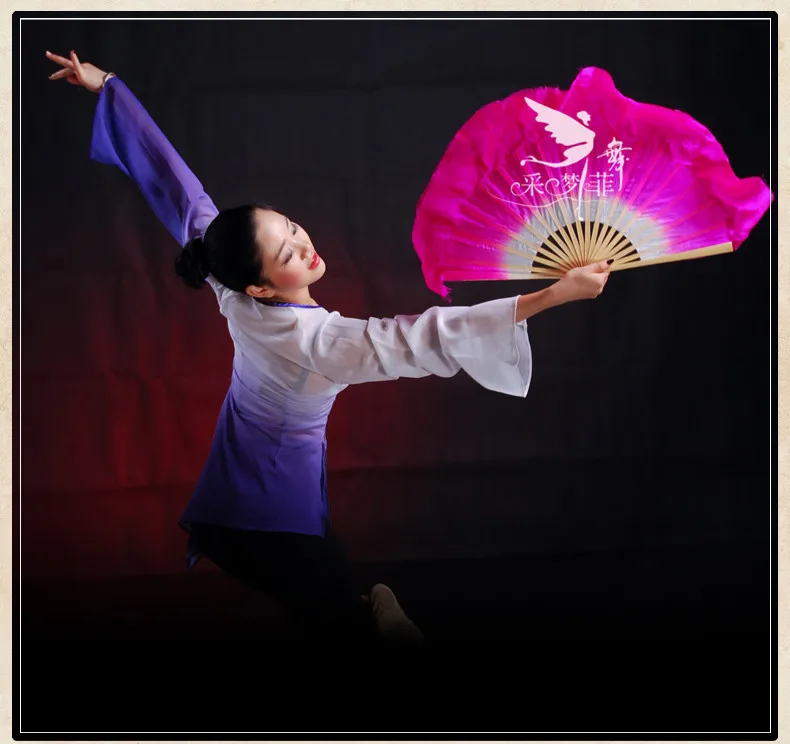
While the heritage of the folk dance that was passed down the generations among ethnic groups as a whole was rich and varied, it was unevenly distributed from group to group, partly because whole chapters, as it were, of the tradition had been lost, for various reasons, often owing to the upheavals of war and the struggle for survival in the face of seemingly insurmountable odds. Therefore, after the PRC came to power, it set about to help the ethnic minorities to each regain its unique modes of expression, including as complete a recovery as possible of the art and practice of the folk dance, through a thorough research into the historical record. The result is that the richness of the original Chinese ethnic folk dance, in all its aspects – both in terms of choreography and repertoire as well as in terms of the exact replication of the original costumes – has slowly made a comeback, and today is recognized, also beyond China's borders, as a world cultural heritage worthy of preservation.
Folk dance of Miao ethic group at Lusheng Festival
Places that you are more likely to appreciate authentic ethnic shows and dance are where most of China ethnic people lives. Most of these areas are located in China's remote southwestern and northwestern frontiers,including Yunnan and Guizhou provinces, and Xinjiang and Tibet autonomous regions. During Lusheng Festival and Sister's Meal Festival of the Miao people in Guizhou Province,traditional Miao performance and Lusheng music are presented. The greatest time to view Dai dance is Water Splashing Festival held 13th to 15th each April. China Highlights offers a special tour to the city of Jinghong each year to coincide with the Dai ethinic minority's annual Water Splashing Festival.
Folk dances were of course more than simple vehicles of ethnic expression, they were sometimes highly sophisticated and elaborate – even dazzlingly spectacular – displays of dance and pageantry, sometimes with a martial arts theme, choreographed to celebrate official ceremonies, from a banquet in honor of a distinguished visitor – including a foreign ambassador such as a Marco Polo – to the coronation of an emperor.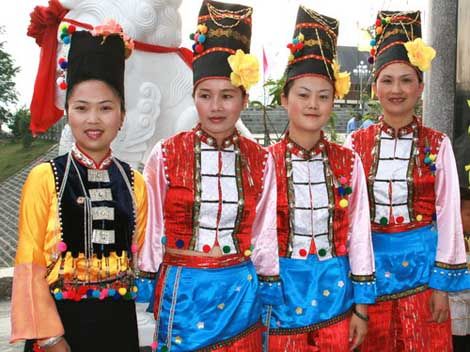 One or more of the dances in such a repertoire, known as Court Dances, might depict a famous battle fought by the reigning emperor, perhaps before he became emperor, such as the famous Court Dance, Prince Qin's Cavalry, written and choreographed by Li Shimin, aka Emperor Taizong of the Tang (618-907) Dynasty, as a patriotic reminder to his people of the need for military preparedness, or of the necessity of not slipping into complacency in times of peace (as a young man of 19, Li Shimin, known as Prince Qin at the time, had participated in military campaigns alongside his father, Emperor Gaozu, the founder – and first emperor – of the Tang Dynasty).
One or more of the dances in such a repertoire, known as Court Dances, might depict a famous battle fought by the reigning emperor, perhaps before he became emperor, such as the famous Court Dance, Prince Qin's Cavalry, written and choreographed by Li Shimin, aka Emperor Taizong of the Tang (618-907) Dynasty, as a patriotic reminder to his people of the need for military preparedness, or of the necessity of not slipping into complacency in times of peace (as a young man of 19, Li Shimin, known as Prince Qin at the time, had participated in military campaigns alongside his father, Emperor Gaozu, the founder – and first emperor – of the Tang Dynasty).
Of course, Court Dances might also simply be special adaptations – for the sole purpose of amusement – of the dances that were performed for ordinary audiences, perhaps portraying ordinary people as buffoons. The reverse happened as well, where the same actors would stage performances for ordinary crowds that mocked royalty, and if the emperor learned of these and was a good sport, he might ask the dancers to perform the "commoner" version at court, just to prove that he was broad-minded.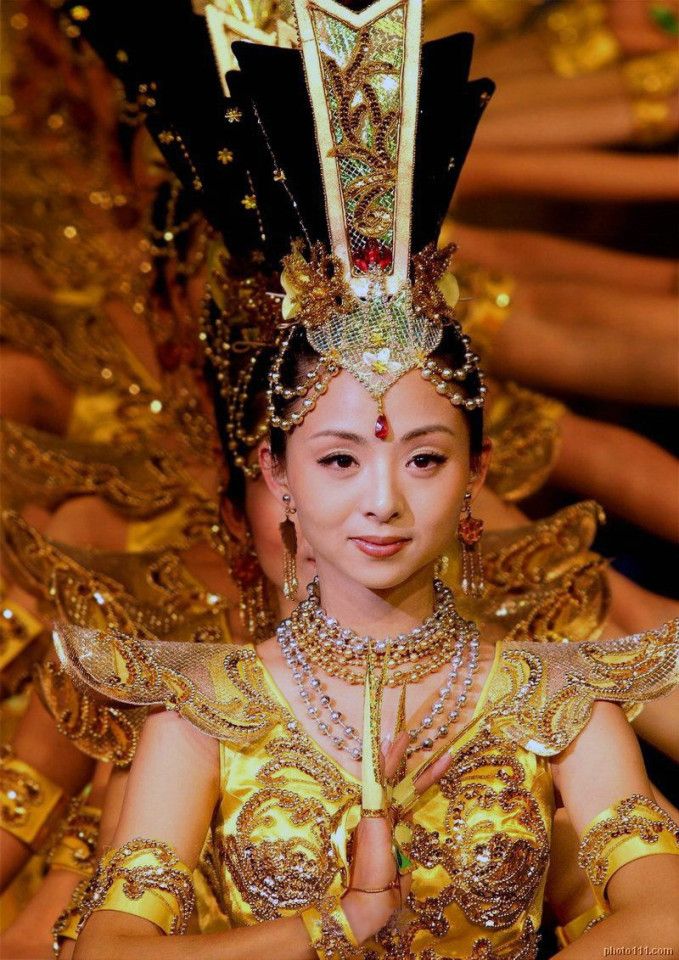
In the following, only the main Chinese folk dance forms, the Dragon Dance and the Lion Dance as well as the Court Dance, will be described. Note that both the Dragon Dance and the Lion Dance are permanent fixtures wherever the Chinese Lunar New Year is celebrated, both in China and abroad.
The Court Dance
Prince Qin's Cavalry – This dance, which ostensibly celebrates the might and grandeur of the Imperial army, was performed as a reminder to the emperor's entourage – including ministers and princes – to never let one's guard down, but to always be prepared to go into battle to defend the motherland. Prince Qin's Cavalry involved a huge troupe of performers, consisting of well over a hundred dancers, as soldiers, and nearly twice as many singers and musicians. It was on such a grand scale that one can only liken it to a theatre performance. The music and the choreography, authored, as indicated, by the emperor himself, was naturally set to a military cadence, with the royal audience encouraged to beat the floor with their scabbards in time with the music.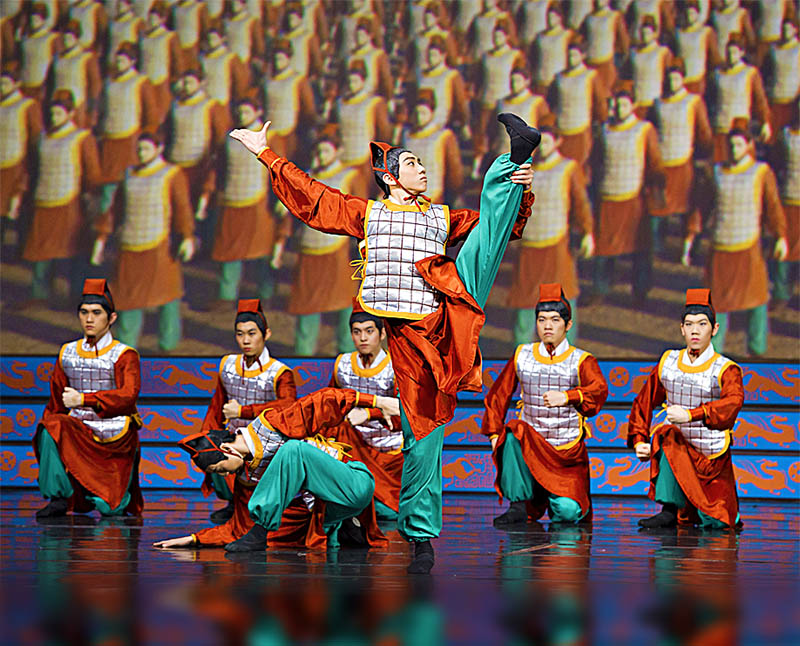 The dance involved 12 "acts" in all, portraying the preparation for battle (including spectacular sword dance displays), the lining up in tight battle formations, and the battle scenes themselves.
The dance involved 12 "acts" in all, portraying the preparation for battle (including spectacular sword dance displays), the lining up in tight battle formations, and the battle scenes themselves.
Court dance of Tang Dynasty
Nichang Yuyi – Nichang Yuyi (the Song of Enduring Sorrow) is also a royal creation, written and choreographed by Tang Dynasty Emperor Xuan Zong (known privately as Li Longji) who reigned from 712-756. The dance, sometimes referred to as the Feather Dress Dance due to the fact that the costumes are adorned with soft, fluttery feathers, suggesting lighness and flight, concerns a legend about an emperor who dreams that he travels to the moon and there, in a palace, sees a group of beautiful, heavenly virgins dressed in feathers and rosy clouds dancing in the skies. When the emperor awakens from this dream and recounts it to his concubine, the concubine recreates the dance for the emperor.
Tang Dynasty Show, originated from the court dance of the Tang Dynasty, is considered as a must-see attraction for each tourist to Xi'an.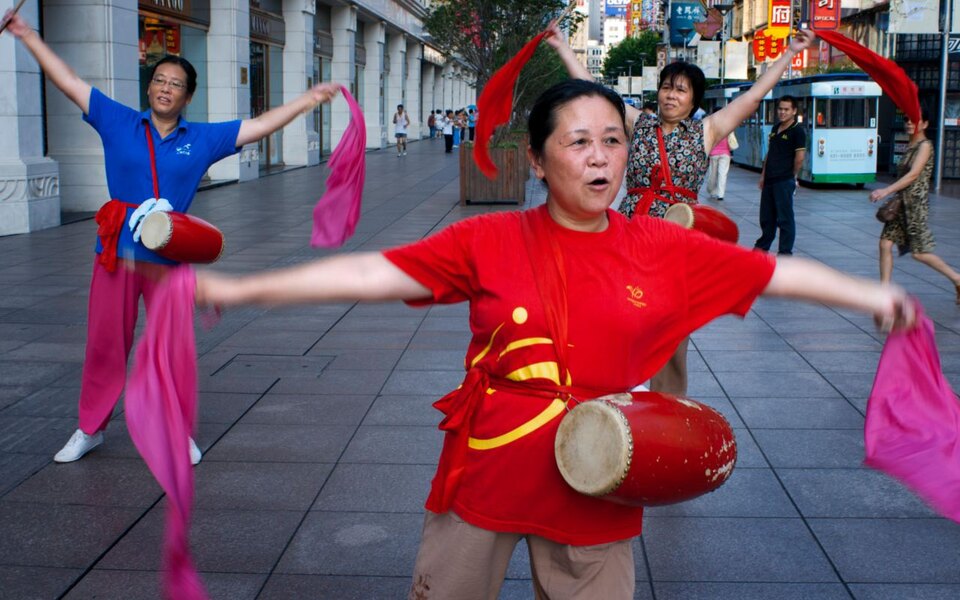 China Highlights' tours to Xian all include a chance to watch this pageantry.
China Highlights' tours to Xian all include a chance to watch this pageantry.
The storyline notwithstanding, this dance became a famous fixture in China, and is still staged wherever Chinese dance is performed, thanks in no small part to the "gauzy" effect both of the dancers' seemingly weightless, graceful motion, and their feathery costumes.
Other Court Dances, usually chosen for one or another distinctive feature – some of which were "commoner" folk dances that were specially reworked so as to appeal to a royal court audience – include the Qipan Dance, the Bayu Dance and the Huteng Dance.
The Dragon Dance
The performance of Dragon Dance needs many dancers to animate the dragon properly.
The dragon, with its fierce looking head especially, symbolizes dignity, wisdom and power in Chinese society, including the power to terrify. Fortunately, the Chinese dragon represents a benevolent force, even a happy one, who wishes nothing more than to bring prosperity to the people (though this is never mentioned in Chinese sources, an outsider to Chinese culture like me cannot help but substitute the qualities of the dragon – wise, dignified and powerful, yet benevolent – with the image that any respectable emperor would like to project, so for me personally, the dragon is an icon that links to the emperor.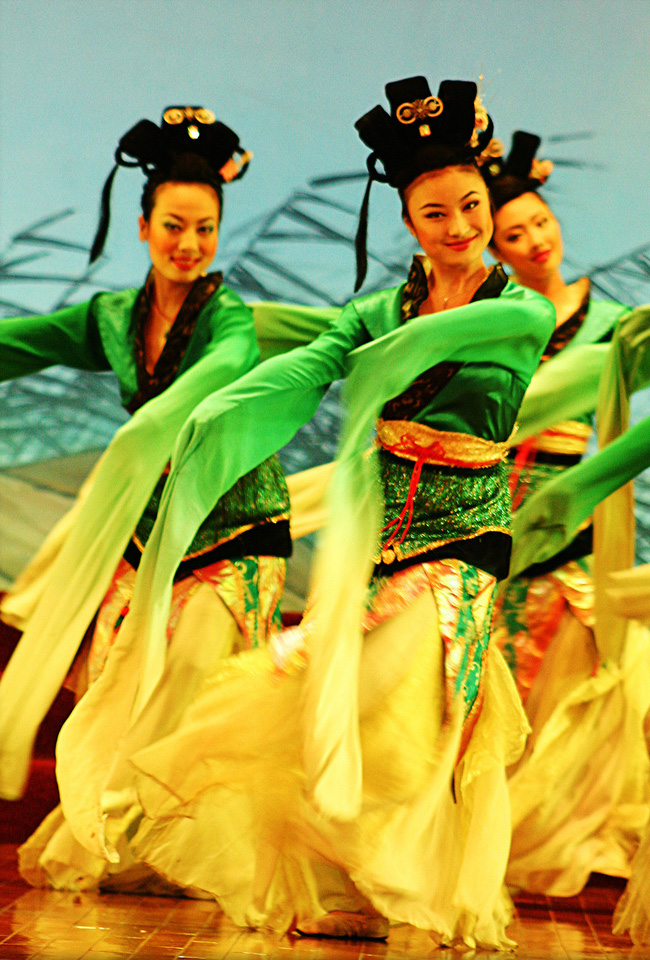 .. and I wonder if the emperor's subjects back then did not also make that same linkage).
.. and I wonder if the emperor's subjects back then did not also make that same linkage).
The Dragon Dance belongs to a category of folk dances in which acrobatics figures prominently, for the writhing antics of the dragon requires acrobatic leaps in order to suggest the undulating, swooping motions of such a large creature, though the dancers support the mock dragon on poles that can be raised, lowered and swung about as needed. Depending on the length of the mock dragon, up to 50 dancers can be required to animate it properly.
There are several versions of the Dragon Dance, one of the most popular of which is the Fire Dragon performance, during which countless lanterns are paraded before the dragon, symbolizing the creature's fiery breath. The Dragon Dance, as it is performed in China (the Dragon Dance is also a permanent fixture in almost every Chinese Lunar New Year celebration in the many Chinatowns all across the world, one of the largest such annual celebrations being the San Francisco Chinese New Year Parade & Festival in the US state of California), is an interactive experience, with jubilant crowds beating drums and gongs. Various parts of the mock dragon's body are lit up with roman-candle-like, spewing fireworks, adding to the festive spirit. Read more on Chinese Dragon Dance
Various parts of the mock dragon's body are lit up with roman-candle-like, spewing fireworks, adding to the festive spirit. Read more on Chinese Dragon Dance
The Lion Dance
The Lion Dance
By far the most popular folk dance performance in all of China is the Lion Dance. The ancient Chinese, like the Greeks and the Romans who would appear after them, prized the qualities of that king of beasts, the lion, seeing it as a guardian figure (the most common depiction of the lion, anywhere, is the male specimen, and in fact, the role of the male lion – who is otherwise rather lazy, leaving the female lions to shoulder the lion's share of the hunting – is precisely to defend the pride, usually simply by making his presence felt, oftentimes in the form of nothing more than a threatening roar). The animal seen by the Chinese people stemmed from India (the African lion is larger), but was no less awe-inspiring. The lion also has symbolic significance in Buddhism, yet another reason for the typical Chinese Imperial subject to admire this fierce beast.
The Lion Dance has a different significance in northern versus southern China. In northern China, the Lion Dance is generally much more evocative, being performed by acrobatic dancers, suggesting all the ferocity and agility of the mighty lion. It was accordingly a favorite dance at court as well. The colors of the "northern" lion were usually a combination or red, orange and yellow (i.e., royal colors) – though green body fur was generally used to represent the female specimen – and with an oversized, shaggy, golden head for the male specimen.
In southern China, the lion takes on the more symbolic role of one who guards against – or in some cases exorcises – evil spirits. The color scheme of the "southern" lion was of no particular importance, therefore they appear in a variety of colors. The head of the southern lion is also oversized, but with even disproportioniately larger eyes, with a "unique horn" (single horn) at the center of the head and with a mirror on its forehead, reflecting light with each of the beast's movements.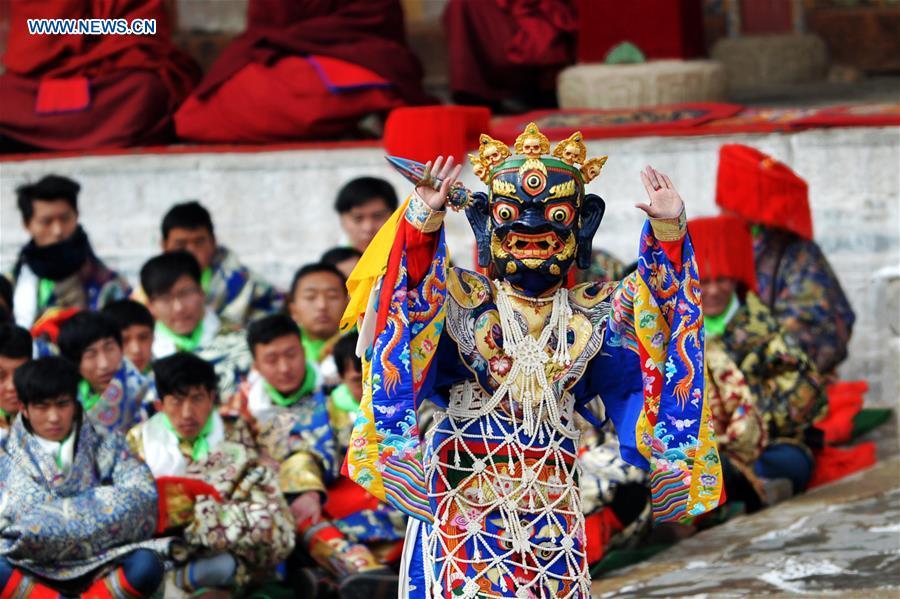
In contrast to the Dragon Dance, the Lion Dance is generally performed with only 2 dancers, whereas the Dragon Dance requires, at a minimum, 10 dancers. This surely goes a long way to explain what is called the popularity of the Lion Dance, for the Lion Dance can be staged in even the smallest, most remote village, and in the south of China – where the majority of China's various ethnic minorities are concentrated – no acrobat is required, as the Lion Dance there is not meant to be evocative, but is strictly symbolic. Read more on Chinese Lion Dance
National Dances of China--China.org.cn
| Han Chinese make up approximately 93.3% of the total population of China. Since ancient times, Han Chinese dances have been distinguished by their richness and variety of forms and styles. SPRING FESTIVAL DANCES The Chinese Spring Festival - New Year's Day according to the agricultural calendar is the most important traditional holiday of the Han people. 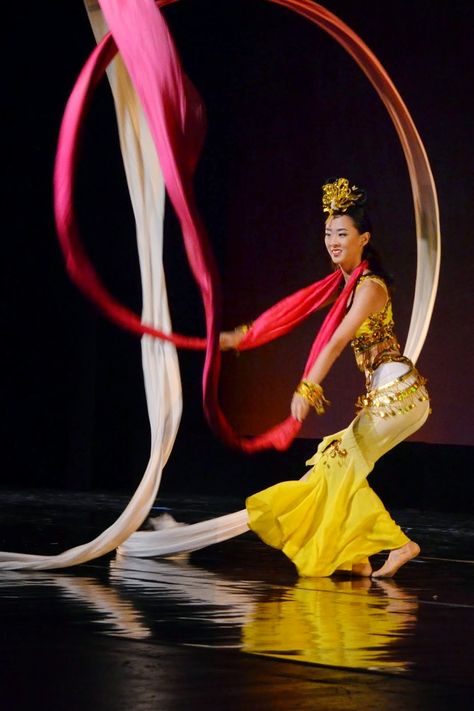 On a festive night, the "straw dragon" wriggles in a dance, spewing flames and smoke. There are also "dragons of the earth" that spew water from their mouths in all directions. And in some provinces south of the Yellow River, images of small dragons are tied to a bench, three men, holding on to the legs of the bench, run and dance to the thunder of timpani and drums. There are also “dragons from separate links”, “dragons from five links” and others. There are also "paper dragons" that are controlled by one person. On a festive night, the "straw dragon" wriggles in a dance, spewing flames and smoke. There are also "dragons of the earth" that spew water from their mouths in all directions. And in some provinces south of the Yellow River, images of small dragons are tied to a bench, three men, holding on to the legs of the bench, run and dance to the thunder of timpani and drums. There are also “dragons from separate links”, “dragons from five links” and others. There are also "paper dragons" that are controlled by one person. The dance of the lion is usually performed by two, the front dancer holding the head of the beast in his hands, the legs represent the front paws of the lion, the other dancer represents the body and hind legs of the lion. The lion dance is performed in a different manner. In one case, the “lion” stands on the ball, jumps, runs, “stands on its hind legs”, in a word, does acrobatic tricks designed to show the power and flexibility of the beast. In another, the "lion" scratches, licks its fur, rolls on the ground, shakes its mane, showing an affectionate and playful character. The dance of the lion requires strength and endurance from the dancers, and in addition, the skills of traditional Wushu gymnastics, in order to show the strength and grace of the beast in its entirety, he must be able to do somersaults, jumps, somersaults. (China.org.cn Internet Information Center) 12/13/2005 |
The Chinese came up with a device to fight the loud music of dancing grandmothers (video)
Using an infrared remote control, you can fight the loud music of dancing grandmothers without entering into open conflict with them.
Related video
In Chinese cities, locals oppose the loud music that middle-aged and elderly women dance to in parks and stadiums. Resourceful citizens have figured out how to remotely turn off music using infrared remotes. It is reported by The Guardian.
It is reported by The Guardian.
Chinese grandmothers dance to loud music
The publication writes that in the public parks and squares of China, early in the morning and late in the evening, elderly women gather, who are experiencing the "Cultural Revolution". They arrange joint dances to loud music, but not everyone likes it.
Residents who do not share the aesthetic tastes of their elderly fellow citizens began to complain about disturbances in residential areas where the population density is quite high. Young entrepreneur Han Lei came up with a remote device that can turn off speakers from a distance of 50 meters. Using the remote control, you can deal with loud music without entering into an open conflict with the dancers and without attracting the attention of others.
"Finally quiet downstairs. For two days the grandmothers thought that their column was not working.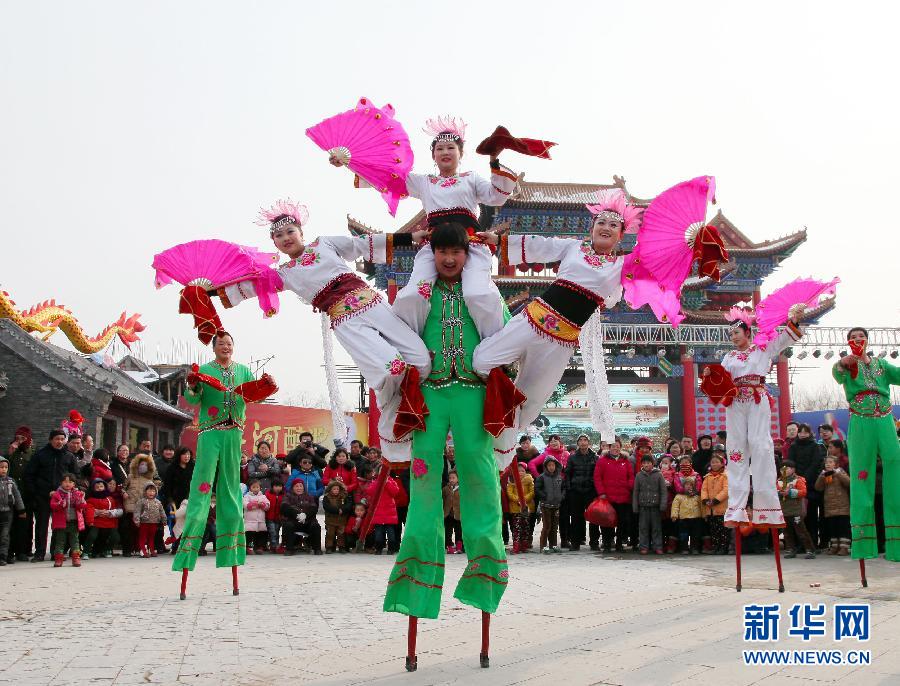 Great invention, with this tool I will now be the leader in the area ... This is not just an ordinary product, this is social justice!" one of the Chinese marketplaces.
Great invention, with this tool I will now be the leader in the area ... This is not just an ordinary product, this is social justice!" one of the Chinese marketplaces.
The $15 to $40 device is like a universal remote control that can turn off most speakers. 20,000 of these consoles have already been sold and have been put into service with disgruntled Chinese.
The publication reports that about 100 million grandmothers participate in such dances in China. The origins of the dance tradition of the Chinese quadrille (dancing in the square) are in ancient times, but in modern history this dance gained a "second wind" in the 60s of the last century, when China was experiencing a "Cultural Revolution". The dancers dance to a variety of music, mostly from Chinese popular artists, both contemporary and folk. In 2015, the Chinese government responded to complaints from citizens who were dissatisfied with the volume of music by prescribing a set of standard procedures for all dancers, and imposing a fine of 500 yuan ($76) on violators.
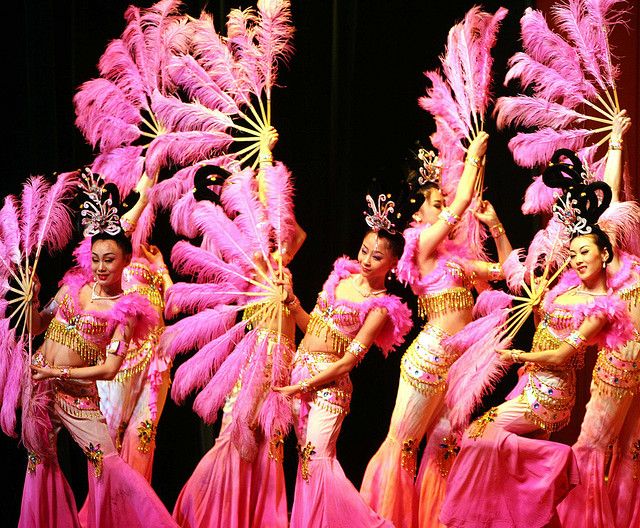 Many types of dances are dedicated to this holiday, the most common and also the most beloved are the DRAGON DANCE, LION DANCE and YANGE.
Many types of dances are dedicated to this holiday, the most common and also the most beloved are the DRAGON DANCE, LION DANCE and YANGE. 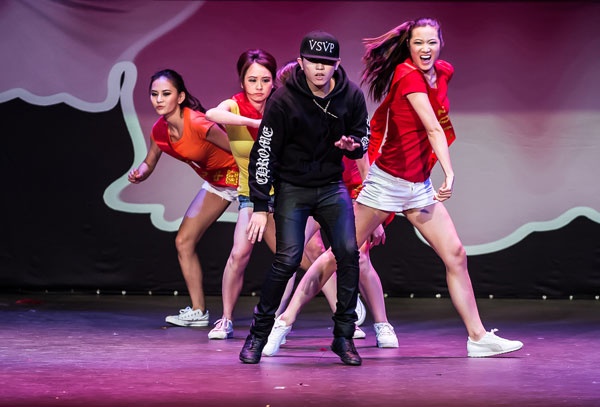 The body of the "lion" is covered with a shaggy golden fabric. Both dancers must work very well in order to successfully imitate the movements of the beast. Sometimes the lion dance includes a playful and cute lion cub performed by one dancer. The lion dance involves a warrior who holds a colorful ball and teases with it the “lion”, who jumps, bends and “plays with the ball”, as it were. The whole dance takes place under the thunder of drums, gongs and other percussion instruments creating a cheerful festive mood.
The body of the "lion" is covered with a shaggy golden fabric. Both dancers must work very well in order to successfully imitate the movements of the beast. Sometimes the lion dance includes a playful and cute lion cub performed by one dancer. The lion dance involves a warrior who holds a colorful ball and teases with it the “lion”, who jumps, bends and “plays with the ball”, as it were. The whole dance takes place under the thunder of drums, gongs and other percussion instruments creating a cheerful festive mood. 
 Stilts are a meter or more in length, walking on them requires some skill. Following them, the artists, dressed up as a heron and a mollusk, play a scene based on an old Chinese fable about how a heron and a mollusk grappled with each other, and the fisherman caught both without any difficulty. Next come the artists, depicting scenes from the most beloved opera performances. Sometimes circus performers, jugglers, artists depicting famous historical figures also participate in the Yangge procession.
Stilts are a meter or more in length, walking on them requires some skill. Following them, the artists, dressed up as a heron and a mollusk, play a scene based on an old Chinese fable about how a heron and a mollusk grappled with each other, and the fisherman caught both without any difficulty. Next come the artists, depicting scenes from the most beloved opera performances. Sometimes circus performers, jugglers, artists depicting famous historical figures also participate in the Yangge procession. 